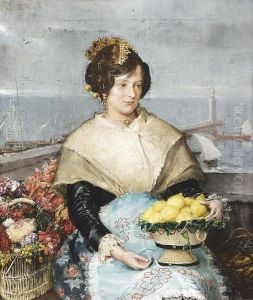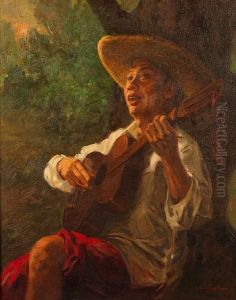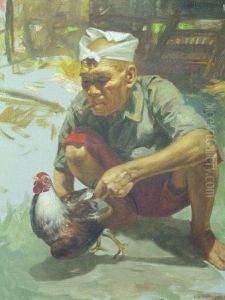Rafael Enriquez Paintings
Rafael Enriquez was a notable artist from Cuba, born on February 2, 1850, in Havana. He was a pivotal figure in the Cuban art scene, particularly in the late 19th and early 20th centuries. Enriquez's contributions to art during this period were significant, as he helped to shape the visual arts landscape in Cuba and influence generations of artists to come.
His early education and exposure to art began in Cuba, and he showed substantial promise as a young artist. With a desire to refine his skills and pursue an artistic career, Enriquez traveled to Europe to study, which was a common practice for many artists from Latin America seeking to immerse themselves in the rich artistic traditions of the Old World. He spent time in Spain, where he absorbed the influences of Spanish masters, and later in Italy, where he was particularly inspired by the Renaissance artworks.
Upon returning to Cuba, Enriquez became an influential figure in the Cuban art world. He was not only involved in creating his own works but also played a significant role in education. Enriquez was one of the founders of the San Alejandro Academy, which became the most important institution for art education in Cuba. His involvement in the academy and his dedication to teaching had a profound impact on the development of Cuban art, as he trained and mentored a new generation of artists.
Throughout his career, Enriquez's art was characterized by a blend of his European training and his Cuban heritage. His paintings often depicted scenes of Cuban life, showing the rich cultural tapestry of the island. He was adept at both historical and genre painting, and his works were well received by both critics and the public.
Rafael Enriquez's legacy is firmly embedded in the history of Cuban art. He is remembered for his artistic achievements and for his dedication to the advancement of art education in Cuba. Enriquez passed away on June 5, 1921, in Havana. His works continue to be celebrated and studied, and his influence can still be seen in the works of Cuban artists today.


